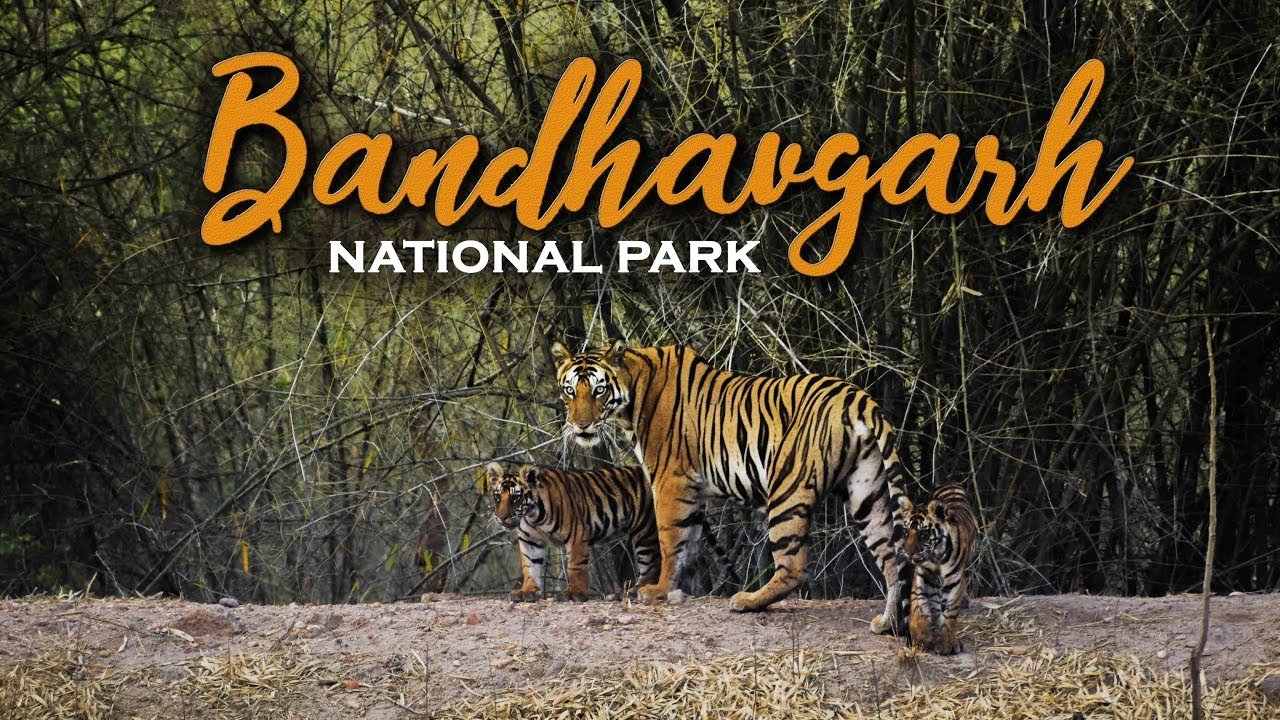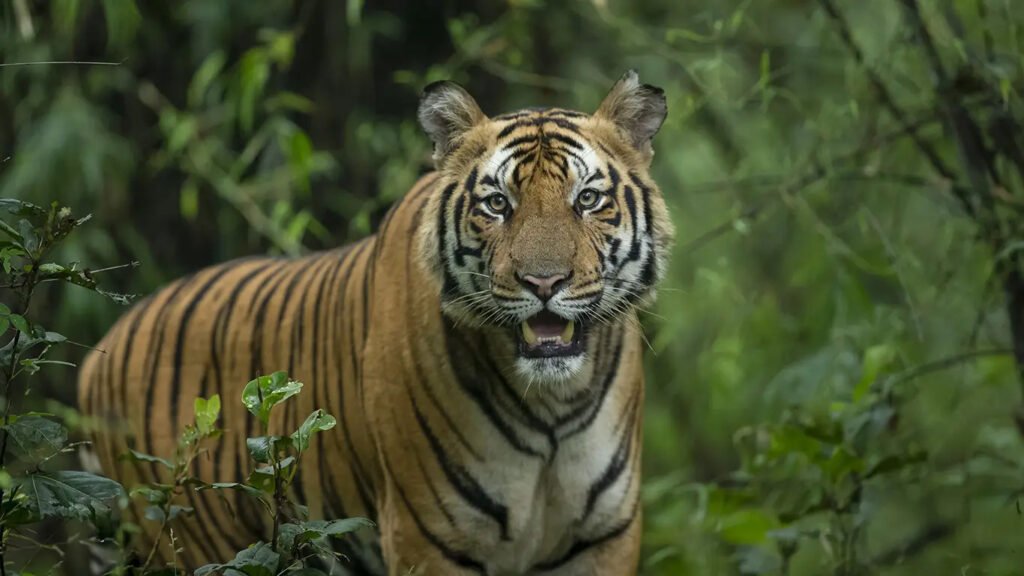
Bandhavgarh National Park is a renowned wildlife sanctuary located in the Umaria district of the Indian state of Madhya Pradesh. It is one of the most popular and well-preserved national parks in India, known for its rich biodiversity and particularly for its high population of Bengal tigers.
When visiting Bandhavgarh National Park, it’s essential to follow the park’s rules and guidelines to ensure the safety of both visitors and wildlife while enjoying the natural beauty and biodiversity it offers.
Bandhavgarh has historical and mythological significance, with ancient ruins and temples scattered throughout the park. The Bandhavgarh Fort, perched on a hilltop, is one of the main attractions. It is believed to date back to the 10th century and offers panoramic views of the surrounding landscape.
Bandhavgarh National Park is known for its diverse flora and fauna. Here’s an overview of the flora and fauna you can find in the park:
Flora:
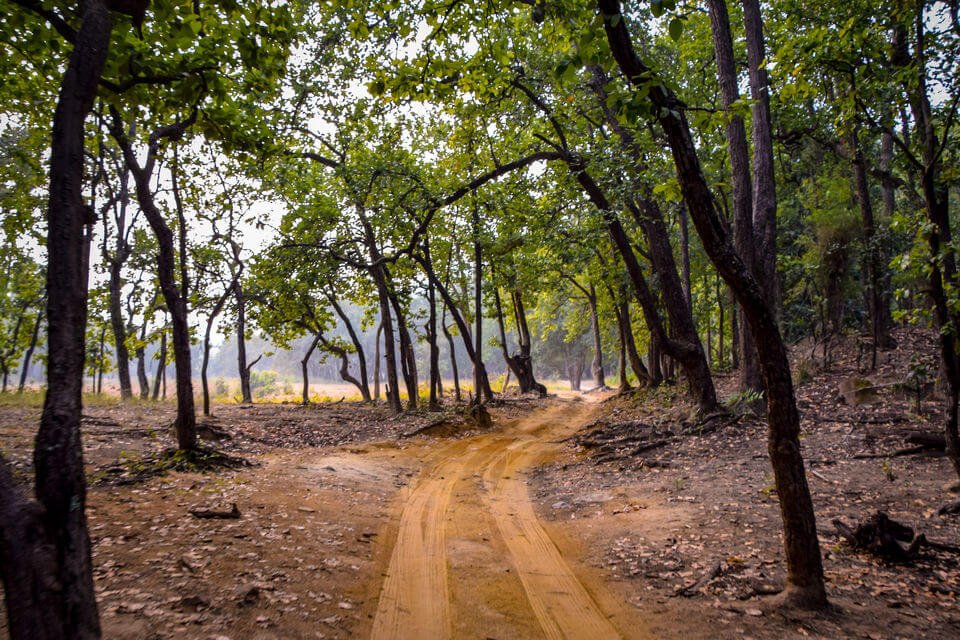
- Sal (Shorea robusta): Sal trees dominate the landscape of Bandhavgarh National Park. These tall and straight trees are a primary component of the forest ecosystem and provide habitat and food for various wildlife species.
- Bamboo: Bamboo thickets are commonly found in the park. They serve as a crucial source of food for herbivores and provide cover for smaller animals.
- Saj (Terminalia tomentosa): Saj trees are another prominent tree species in the park and provide valuable shade for wildlife.
- Dhobin (Lagerstroemia parviflora): Dhobin trees, with their distinctive peeling bark, are scattered throughout the park.
- Other Plant Species: The park also features a variety of other plant species, including grasslands, shrubs, and smaller trees that contribute to the park’s overall biodiversity.
Fauna:
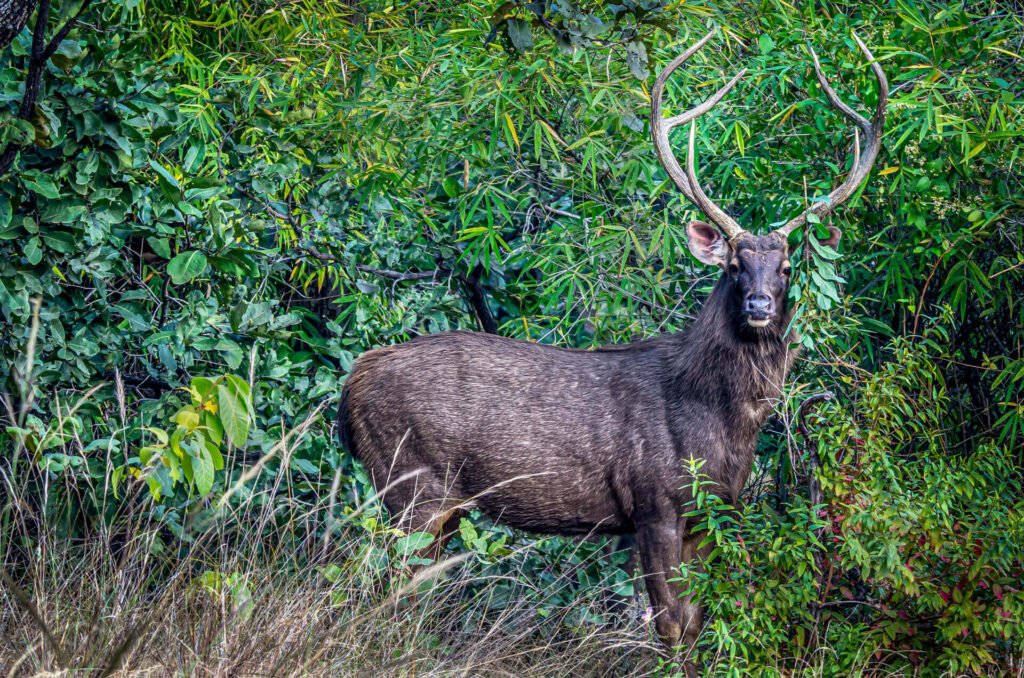
- Bengal Tiger (Panthera tigris tigris): Bandhavgarh National Park is renowned for its healthy population of Bengal tigers. It’s one of the best places in India to spot these magnificent creatures in their natural habitat.
- Leopard (Panthera pardus): Leopards are another big cat species that inhabit the park. They are more elusive than tigers but can be occasionally seen.
- Indian Bison (Gaur): Indian bison, also known as gaur, are the largest wild cattle species and can be frequently spotted in the park.
- Sambar Deer: The park is home to a significant population of sambar deer, which is one of the largest deer species in India.
- Spotted Deer (Chital): Spotted deer, or chital, are commonly seen in the park and are a primary prey species for tigers and leopards.
- Wild Boar: Wild boars are widespread in Bandhavgarh and play a crucial role in the carnivore food chain.
- Sloth Bear: Sloth bears are another highlight of the park’s fauna. They are known for their shaggy fur and unique appearance.
- Indian Wolf: Bandhavgarh is one of the few places in India where you might encounter the Indian wolf, a rare and endangered species.
- Striped Hyena: Striped hyenas are occasionally seen in the park, though they are more elusive than some other predators.
- Birdlife: Bandhavgarh National Park is also home to a diverse range of bird species, including vultures, eagles, owls, and various waterfowl.
- Reptiles: The park is inhabited by several reptile species, including the Indian python, monitor lizard, and a variety of snakes.
JUNGLE SAFARI IN BANDHAVGARH TIGER RESERVE :
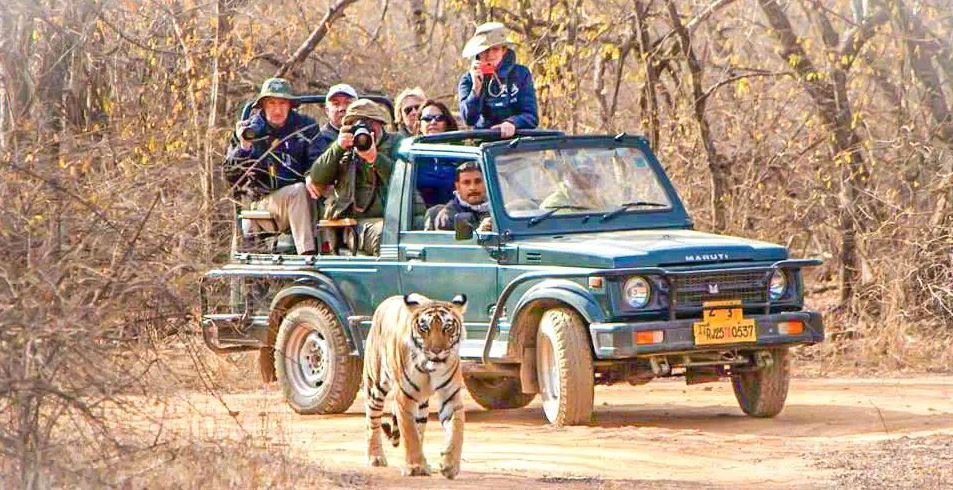
A jungle safari in Bandhavgarh National Park is an exciting and immersive experience that allows you to explore the park’s diverse wildlife and stunning natural beauty. Here’s what you need to know about going on a jungle safari in Bandhavgarh:
- Safari Types: Bandhavgarh National Park offers two main types of safaris: Jeep Safaris and Elephant Safaris.
- Jeep Safaris: Jeep safaris are the most popular way to explore the park. These are typically conducted in open 4×4 vehicles that can accommodate a limited number of passengers (usually six to eight). Jeep safaris provide a more personalized and flexible experience, allowing you to get closer to wildlife and explore different zones of the park.
- Elephant Safaris: Elephant safaris offer a unique perspective as you ride atop an elephant. While these safaris are less common than jeep safaris, they can be a thrilling way to observe wildlife, especially tigers.
- Zone System: Bandhavgarh National Park is divided into various zones, each with its own entry gate. The zones include Tala, Magadhi, Khitauli, and Panpatha. Each zone has its own unique terrain and wildlife sightings. The Tala zone is considered the premium zone for tiger sightings, but all zones offer excellent wildlife viewing opportunities.
- Permits and Booking: To go on a jungle safari in Bandhavgarh, you need to obtain permits, which are issued by the Forest Department. It’s advisable to book your safari well in advance, especially during the peak tourist season (November to March). You can book permits through the official website of the Madhya Pradesh Forest Department or through authorized tour operators.
- Timings: The safari timings in Bandhavgarh National Park are divided into two shifts: morning and evening. The exact timings may vary depending on the season. Morning safaris typically start early, just after sunrise, while evening safaris begin a few hours before sunset.
- Duration: A typical safari lasts for about 3 to 4 hours, allowing you ample time to explore the park, spot wildlife, and enjoy the natural surroundings.
- Safari Rules and Etiquette: While on a safari, it’s essential to follow the rules and guidelines set by the Forest Department. This includes maintaining silence, not littering, and respecting the natural environment. Also, remember that wildlife sightings are not guaranteed, and patience is often required.
- Clothing and Gear: Dress comfortably and wear earth-toned or camouflage clothing to blend in with the surroundings. Bring a hat, sunglasses, sunscreen, and insect repellent. Binoculars and a good camera with a telephoto lens are also recommended for better wildlife viewing and photography.
- Wildlife Viewing: While tigers are the star attraction, keep an eye out for other wildlife like leopards, deer, monkeys, and a variety of bird species. Listen to your guide and driver for information about tracks and signs that might lead to wildlife sightings.
- Safety: Always prioritize safety. Follow the instructions of your safari guide and driver, and do not attempt to get out of the vehicle or approach wild animals.
A jungle safari in Bandhavgarh National Park is a thrilling adventure that allows you to connect with nature and witness some of India’s most iconic wildlife in their natural habitat. It’s an experience that wildlife enthusiasts and nature lovers cherish.
GATE OVERVIEW FOR THE BANDHAVGARH NATIONAL PARK :
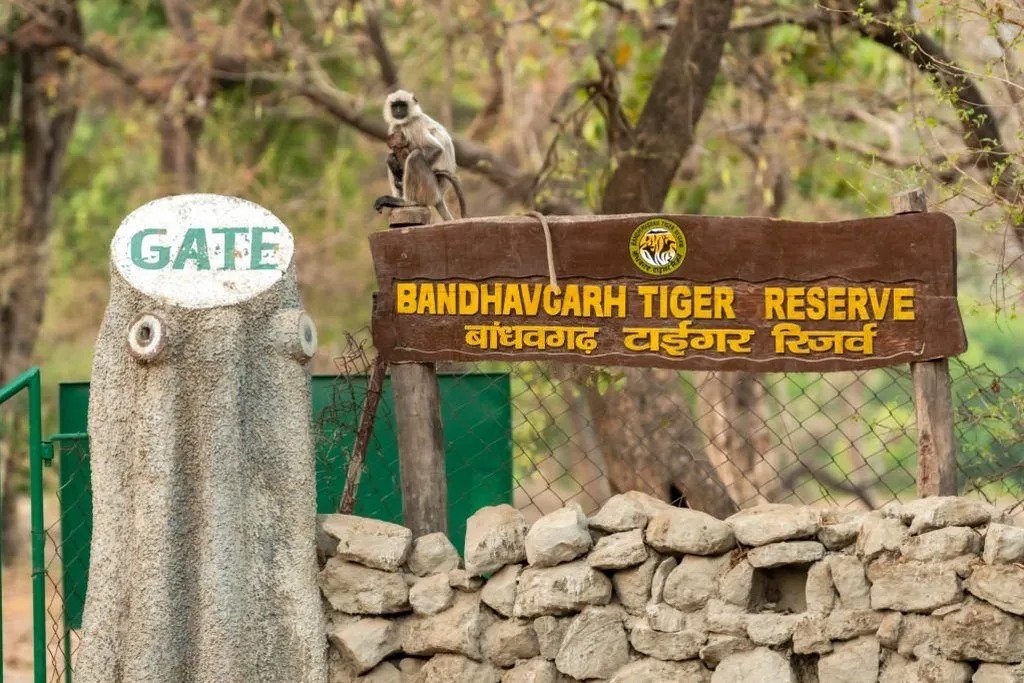
Bandhavgarh National Park is divided into several zones, each with its own entry gate and unique characteristics. These zones offer visitors different opportunities to explore the park’s biodiversity and increase their chances of spotting wildlife, especially the famous Bengal tigers. As of my last knowledge update in September 2021, the park had several zones:
- Tala Zone: The Tala zone is often considered the premium zone for wildlife viewing, particularly tiger sightings. It is the most popular and frequently visited zone in Bandhavgarh. The terrain here is varied, with a mix of dense forests, grasslands, and rocky hills.
- Magadhi Zone: The Magadhi zone is known for its rugged landscapes and is also a prime area for tiger sightings. It offers a different perspective of the park’s beauty and wildlife. Like the Tala zone, it has a mix of forests and grasslands.
- Khitauli Zone: The Khitauli zone provides a more relaxed and less crowded safari experience compared to Tala and Magadhi. It’s known for its lush meadows and scenic beauty. While tiger sightings are possible here, it’s generally considered a bit quieter.
- Panpatha Zone: The Panpatha zone is known for its dense vegetation and is considered one of the more challenging zones for wildlife sightings due to the thick forests. However, it’s a good place to explore the park’s biodiversity and birdlife.
Please note that the availability of these zones and their popularity might change over time. Additionally, the forest department may occasionally close or open specific zones for maintenance and wildlife conservation purposes. It’s essential to check with the official website of the Madhya Pradesh Forest Department or consult with local authorities or tour operators for the most up-to-date information on Bandhavgarh’s safari zones and their accessibility.



